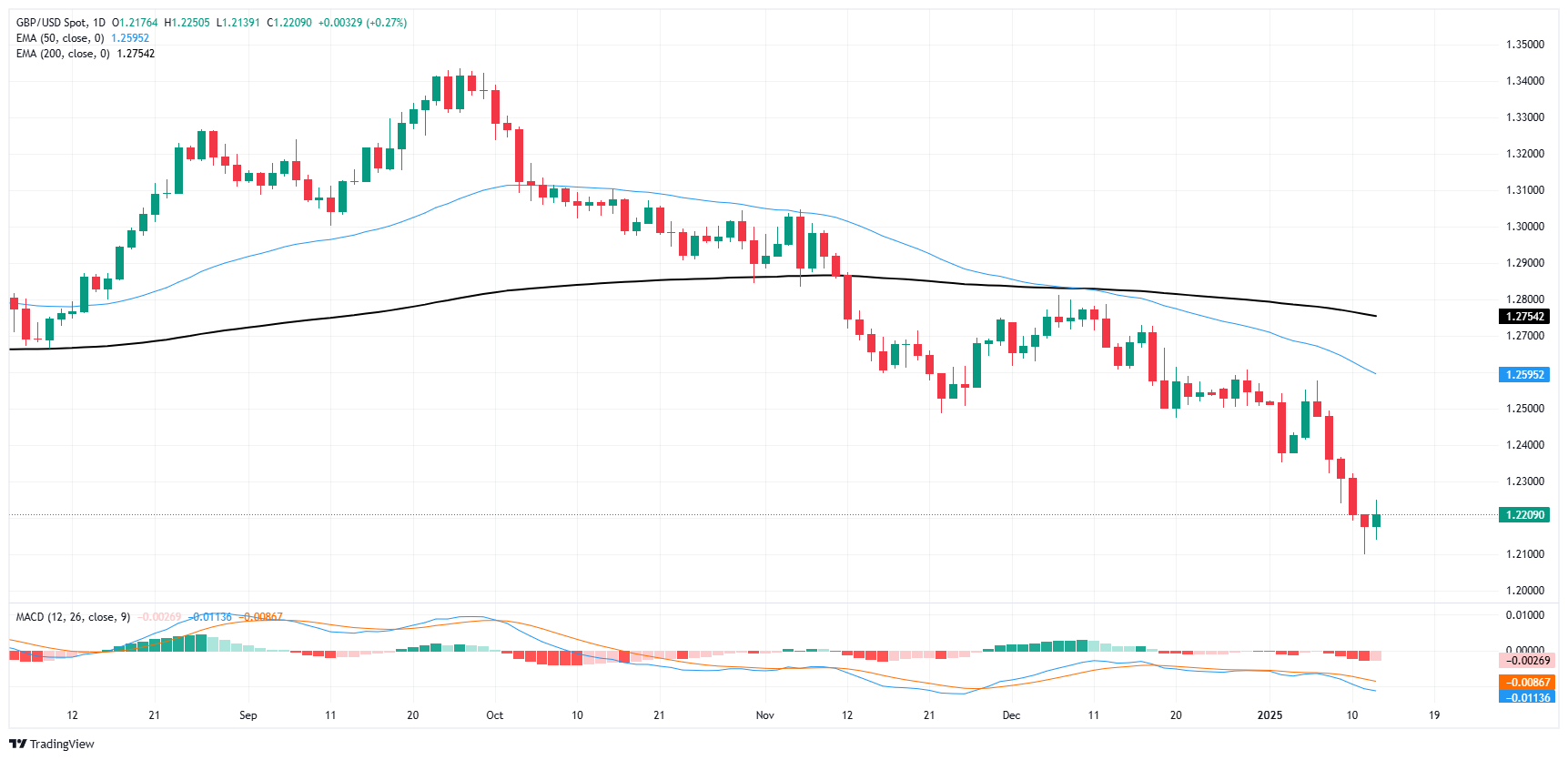GBP/USD grapples with lows as key inflation data looms ahead
- GBP/USD is tangled up in the 1.2200 handle ahead of key CPI inflation prints.
- US inflation data might miss expectations, paving the way for rate cut hopes.
- Pound Sterling traders are hoping for a rebound in UK GDP growth.
GBP/USD is mired in near-term technical consolidation near the 1.2200 handle as key inflation metrics from the US and UK growth figures loom large through the midweek sessions. US Consumer Price Index (CPI) inflation is expected to accelerate, though a softening in US Producer Price Index (PPI) number has sparked a fresh round of investor hopes that inflation will not only cool, but do so enough to force a fresh bout of rate cutting rhetoric from the Federal Reserve (Fed).
Headline PPI inflation rose to 3.3% YoY versus the previous figure of 3.0%, while core PPI accelerated to 3.5% YoY compared to the previous 3.4%. While both figures came in below expectations, the print wasn’t quite the boon to investor sentiment that many were hoping for as inflation pressures continue to simmer away in the background, albeit at a slightly lower boil than economists forecast. With inflation metrics still trending well above annualized Federal Reserve (Fed) targets, PPI figures printing below forecasts is a distinction without a difference when it comes to expectations of interest rate decreases.
UK CPI inflation metrics will kick off the Wednesday market session, and median market forecasts expect a flat print of 2.6% YoY in the non-preliminary figure. On the US side, CPI is forecast to accelerate to 2.9% YoY from the previous 2.7%, and still holding well above the Fed’s 2.0% annual inflation target.
GBP/USD price forecast
Cable bidders were able to turn things around and keep bids nailed to the 1.2200 handle on Tuesday, but the pair is still drifting deep into bear country after tapping a fresh 15-month low earlier this week. The pair is down nearly 4% in January alone, and GBP/USD is on pace to close in the red for a fourth straight month if things don’t take a bullish turnaround soon.
GBP/USD daily chart
Pound Sterling FAQs
The Pound Sterling (GBP) is the oldest currency in the world (886 AD) and the official currency of the United Kingdom. It is the fourth most traded unit for foreign exchange (FX) in the world, accounting for 12% of all transactions, averaging $630 billion a day, according to 2022 data. Its key trading pairs are GBP/USD, also known as ‘Cable’, which accounts for 11% of FX, GBP/JPY, or the ‘Dragon’ as it is known by traders (3%), and EUR/GBP (2%). The Pound Sterling is issued by the Bank of England (BoE).
The single most important factor influencing the value of the Pound Sterling is monetary policy decided by the Bank of England. The BoE bases its decisions on whether it has achieved its primary goal of “price stability” – a steady inflation rate of around 2%. Its primary tool for achieving this is the adjustment of interest rates. When inflation is too high, the BoE will try to rein it in by raising interest rates, making it more expensive for people and businesses to access credit. This is generally positive for GBP, as higher interest rates make the UK a more attractive place for global investors to park their money. When inflation falls too low it is a sign economic growth is slowing. In this scenario, the BoE will consider lowering interest rates to cheapen credit so businesses will borrow more to invest in growth-generating projects.
Data releases gauge the health of the economy and can impact the value of the Pound Sterling. Indicators such as GDP, Manufacturing and Services PMIs, and employment can all influence the direction of the GBP. A strong economy is good for Sterling. Not only does it attract more foreign investment but it may encourage the BoE to put up interest rates, which will directly strengthen GBP. Otherwise, if economic data is weak, the Pound Sterling is likely to fall.
Another significant data release for the Pound Sterling is the Trade Balance. This indicator measures the difference between what a country earns from its exports and what it spends on imports over a given period. If a country produces highly sought-after exports, its currency will benefit purely from the extra demand created from foreign buyers seeking to purchase these goods. Therefore, a positive net Trade Balance strengthens a currency and vice versa for a negative balance.
